- Tue Jan 31, 2017 8:16 am
#285189
"Big Pink" is an unregistered cultivar, or variety of Drosera capensis-- a large warm temperate species from South Africa. The species is arguably the most magnificent and overlooked species in our hobby. I'm happy to see the climbing interest in this large, and red colored variety. But along with its rising popularity has also arisen some confusion about its traits and about what happens when "Big Pink" selfs and produces seeds. Moreover, after growing this variety extensively for a few years, I feel it deserves a more formal description/and/or discussion.
In late December of 2014 I received three small plants in the mail from Josh at Carnivorous plant connection (flytrapking now) which is the original source of this variety.
Since then I have been able to raise hundreds of individuals via cuttings:
My original plants the day they arrived

Propagation

Though Josh hasn't formally described the variety, on his website he says:

On a more detailed note, "Big Pink" does vary a lot from the cultivar "All red". "Big Pink" tends to have longer and much slender petioles. "Big Pink" does not color up as readily as "All red", and grows much faster, stemming along the way. In fact, when fed often "Big Pink" will not redden at all... only darker tentacles will be noticeable.
"Big Pink" is thought to originate from a Drosera capensis 'Albino' x Drosera capensis "All red" cross, which may explain its tendency to color up less than the vanilla "All red". "Big Pink" flowers often, and when the seeds are planted, something, perhaps unexpected, happens. The selfed progeny of "Big Pink" result in a mixture of red plants and 'Albino' seedlings in a 9:1 ratio approximately. As far as is reported, none of the F1 generation of "Big Pink" have the vigor of the parents, in fact the red seedlings for all intents and purposes seem identical to "All red" varieties.
When selfed, "Big Pink" struggles to produce much viable seed, despite developing massive inflorescence with many small individual flowers. The flower morphology is also somewhat unique within the species, aside from occasionally being huge, the stigma may be highly flared and lobed more than other varieties.


Note the flared stigmas. Zoom in on the photos for more detail.

Outcrossing different varieties is a largely unexplored area in Drosera and especially capensis. However, I have made these crosses with "Big Pink" and have the following notes:
Drosera capensis "Big Pink" x 'Albino'
Fairly straightforward cross which yielded simply a higher ratio of 'Alba' to "All red" around 5:4 in favor of alba. Moreover, no new or novel specimens are observed. Although sometimes I think I see a slight elongation in the leaves of the 'Albino' plants not seen in norm, but that is not definitive. I'm currently working on the reverse cross (TBC).
"Big Pink" x 'Albino' experiment

Drosera capensis "Wideleaf" x "Big Pink"
In this cross I used an absolutely excellent, vigorous, large and very wideleafed "Wideleaf" specimen I originally obtained from Meadowview with my other favorite capensis I created a cross that is pretty special to me. Nearly all the plants of this cross are extremely vigorous, rivaling "typical" and "Big Pink". They occasionally blush light to dark red on their leaves, and particularly the old/dying leaves. Some widening of the blades and petioles is more obvious on some specimens than others.
Grow bin of the "Wideleaf" x "Big Pink" and reverse crosses


As they mature I have noticed that some specimens more strongly retain the "Wideleaf" blade to petiole length ratio (photos soon) than the longer petiole to blade ratio in "Big Pink" whilst the petiole remains slender in both iterations of this cross. This makes for an interesting leaf type. See the reverse cross-
Drosera capensis "Big Pink" x "Wideleaf"
This reverse cross is somewhat dissimilar to the previous. Firstly, some 'Albino' plants may be found. Generally, the non-albino specimens are much less vigorous, more red with shorter and slimmer petioles but wider and paddle-like leaf blades especially when young. Although they are darker and have wider leaf blades, they are less impressive in size and growth. The production of this hybrid was also harder to make because "Big Pink" seems to struggle making seed, whilst donating pollen from "Big Pink" to "Wideleaf" doesn't seem to be an issue.
Paddle-like red leaves

Updated 11/24/18
In late December of 2014 I received three small plants in the mail from Josh at Carnivorous plant connection (flytrapking now) which is the original source of this variety.
Since then I have been able to raise hundreds of individuals via cuttings:
My original plants the day they arrived
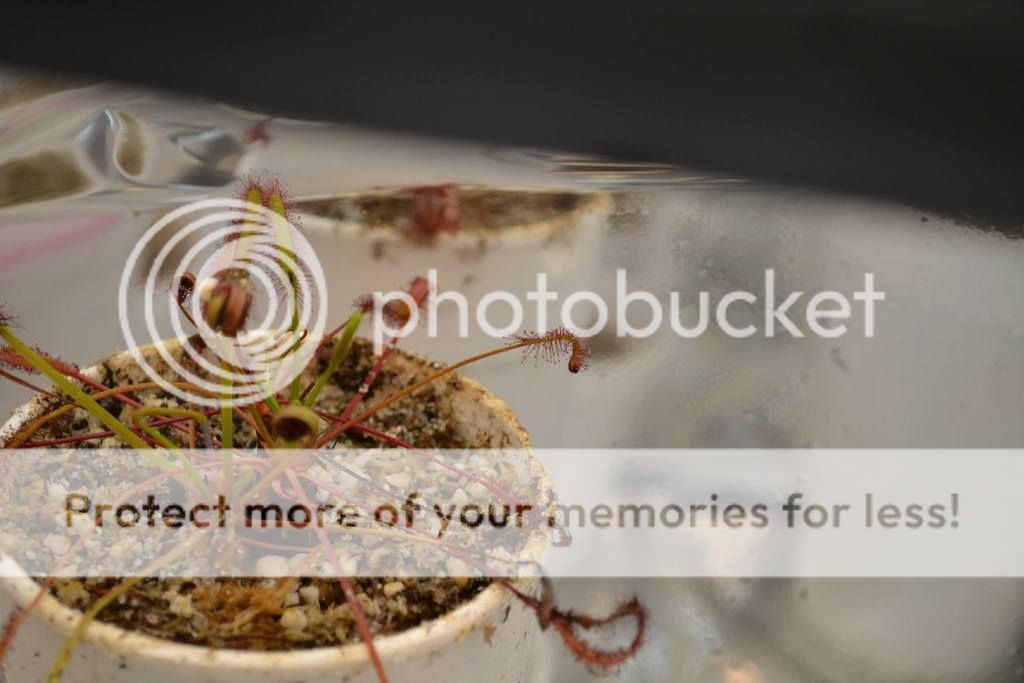
Propagation
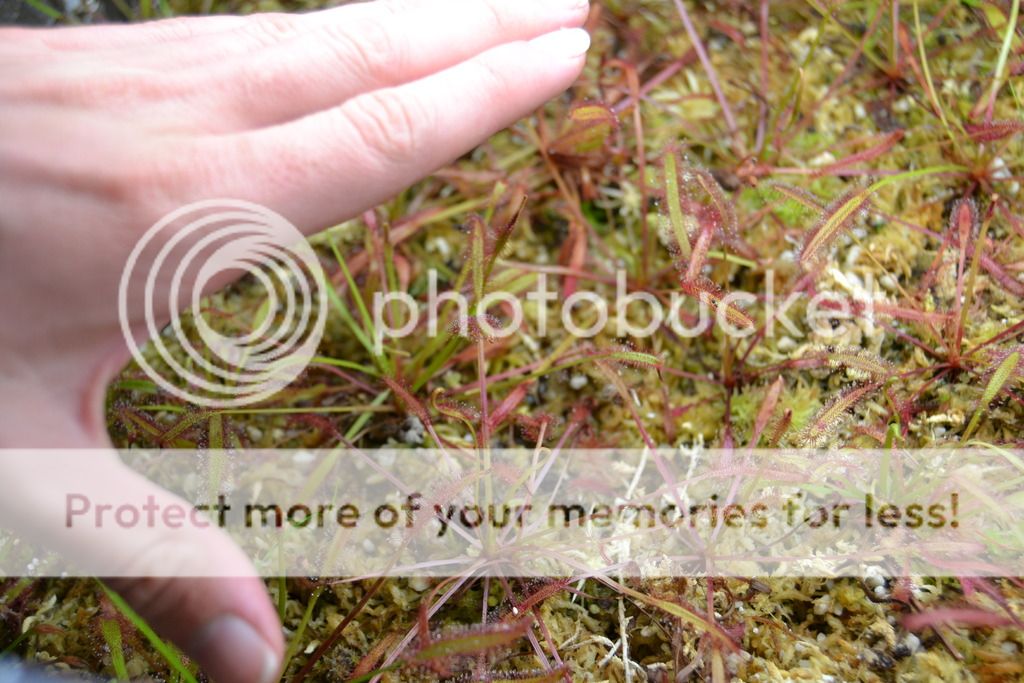
Though Josh hasn't formally described the variety, on his website he says:
"Big Pink" is the fastest growing, largest and most colorful cape sundew cultivar.And I have to say I agree! Although the leaves might not be the largest of the varieties, it can hold onto a huge amount of leaves even in sub-optimal conditions. Here's one that got quite large in my conditions 2015-2016.
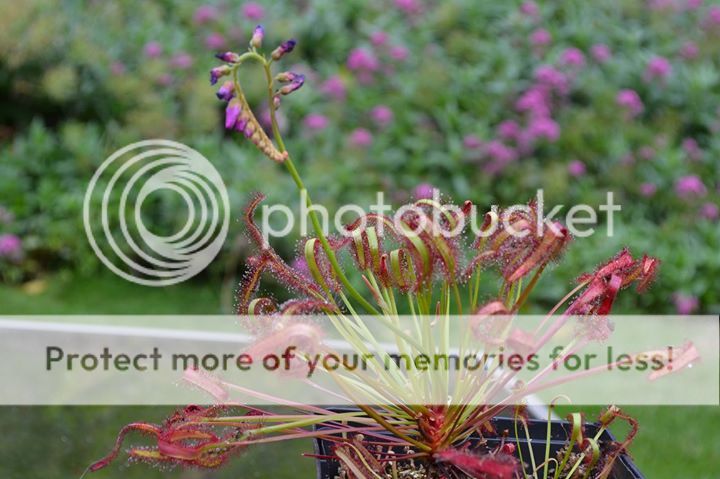
On a more detailed note, "Big Pink" does vary a lot from the cultivar "All red". "Big Pink" tends to have longer and much slender petioles. "Big Pink" does not color up as readily as "All red", and grows much faster, stemming along the way. In fact, when fed often "Big Pink" will not redden at all... only darker tentacles will be noticeable.
"Big Pink" is thought to originate from a Drosera capensis 'Albino' x Drosera capensis "All red" cross, which may explain its tendency to color up less than the vanilla "All red". "Big Pink" flowers often, and when the seeds are planted, something, perhaps unexpected, happens. The selfed progeny of "Big Pink" result in a mixture of red plants and 'Albino' seedlings in a 9:1 ratio approximately. As far as is reported, none of the F1 generation of "Big Pink" have the vigor of the parents, in fact the red seedlings for all intents and purposes seem identical to "All red" varieties.
When selfed, "Big Pink" struggles to produce much viable seed, despite developing massive inflorescence with many small individual flowers. The flower morphology is also somewhat unique within the species, aside from occasionally being huge, the stigma may be highly flared and lobed more than other varieties.
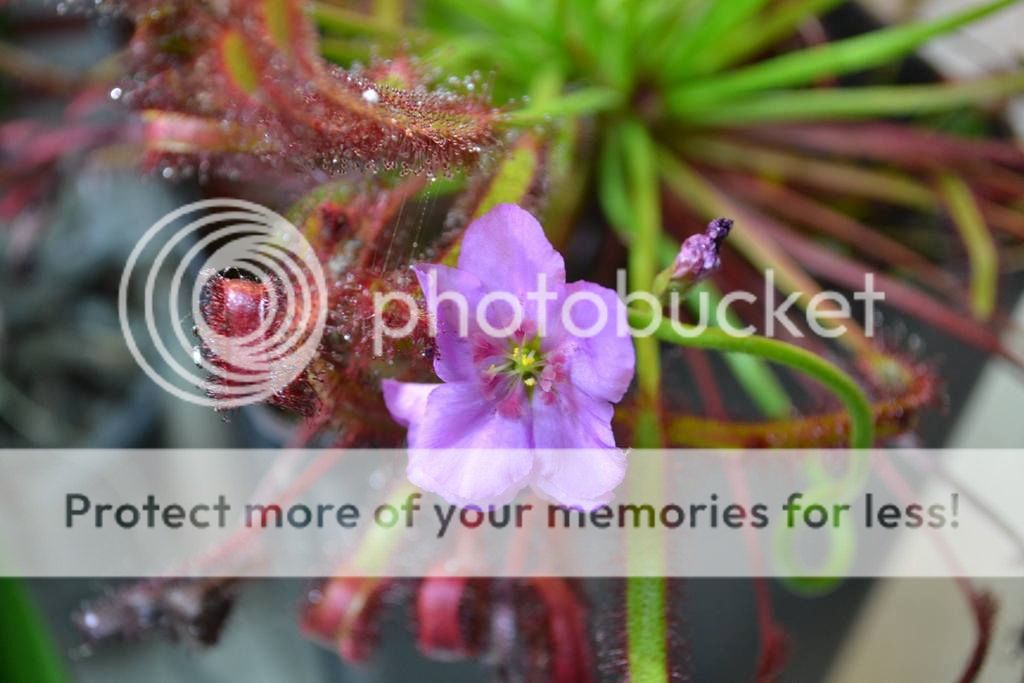

Note the flared stigmas. Zoom in on the photos for more detail.
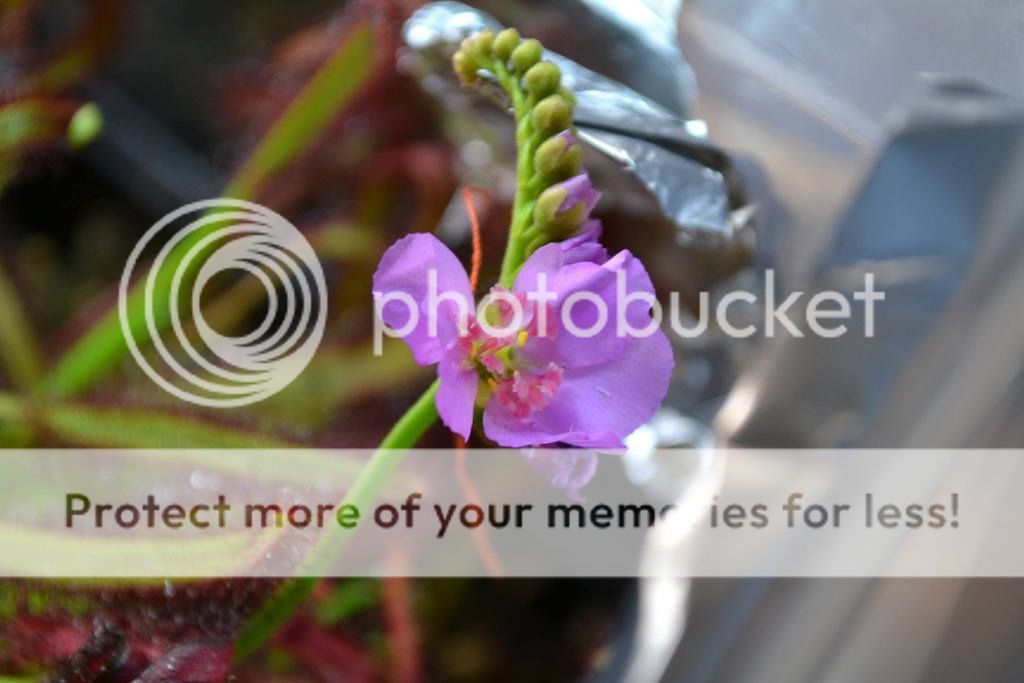
Outcrossing different varieties is a largely unexplored area in Drosera and especially capensis. However, I have made these crosses with "Big Pink" and have the following notes:
Drosera capensis "Big Pink" x 'Albino'
Fairly straightforward cross which yielded simply a higher ratio of 'Alba' to "All red" around 5:4 in favor of alba. Moreover, no new or novel specimens are observed. Although sometimes I think I see a slight elongation in the leaves of the 'Albino' plants not seen in norm, but that is not definitive. I'm currently working on the reverse cross (TBC).
"Big Pink" x 'Albino' experiment
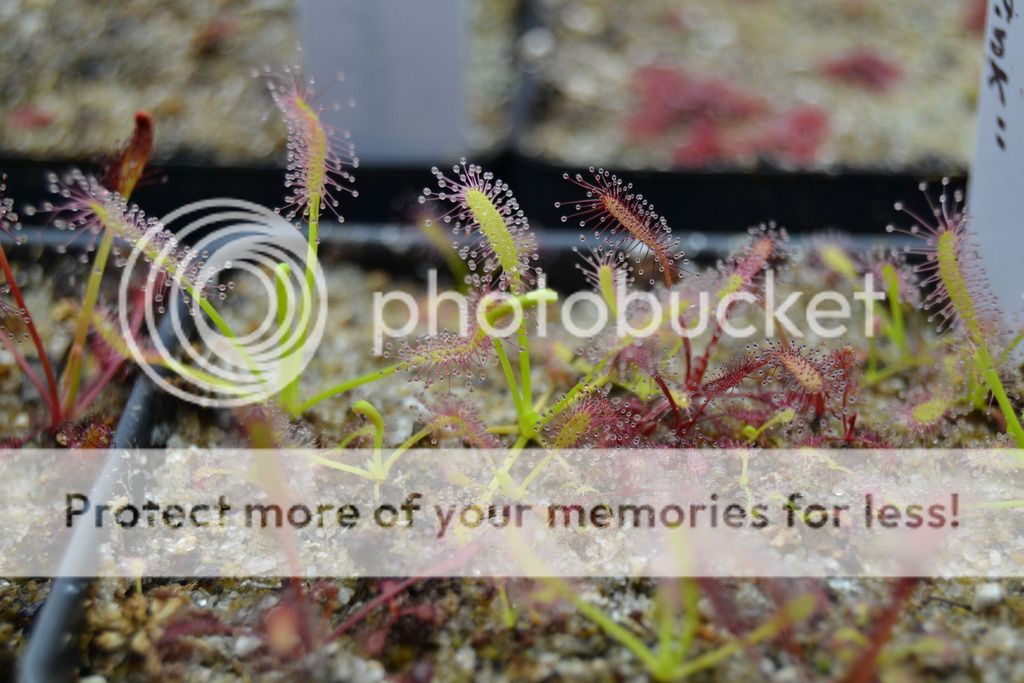
Drosera capensis "Wideleaf" x "Big Pink"
In this cross I used an absolutely excellent, vigorous, large and very wideleafed "Wideleaf" specimen I originally obtained from Meadowview with my other favorite capensis I created a cross that is pretty special to me. Nearly all the plants of this cross are extremely vigorous, rivaling "typical" and "Big Pink". They occasionally blush light to dark red on their leaves, and particularly the old/dying leaves. Some widening of the blades and petioles is more obvious on some specimens than others.
Grow bin of the "Wideleaf" x "Big Pink" and reverse crosses
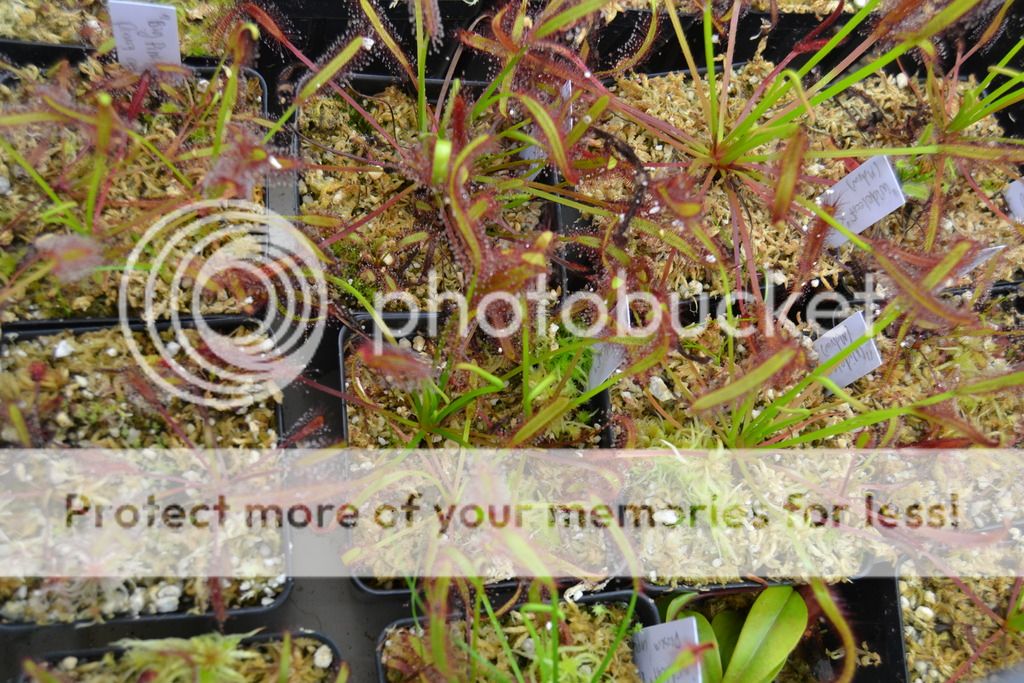
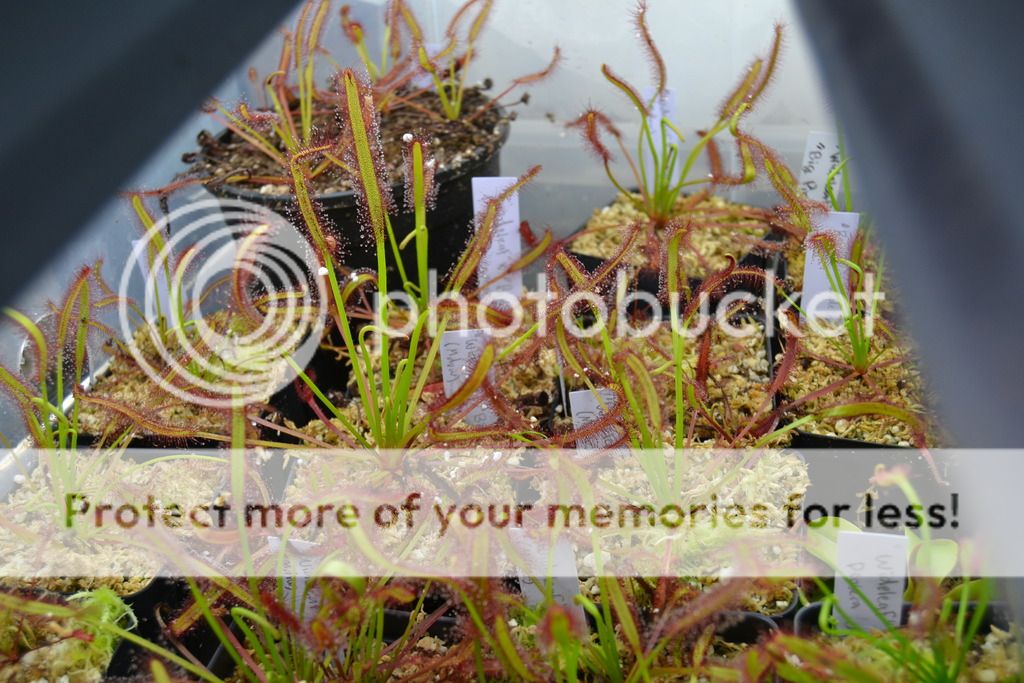
As they mature I have noticed that some specimens more strongly retain the "Wideleaf" blade to petiole length ratio (photos soon) than the longer petiole to blade ratio in "Big Pink" whilst the petiole remains slender in both iterations of this cross. This makes for an interesting leaf type. See the reverse cross-
Drosera capensis "Big Pink" x "Wideleaf"
This reverse cross is somewhat dissimilar to the previous. Firstly, some 'Albino' plants may be found. Generally, the non-albino specimens are much less vigorous, more red with shorter and slimmer petioles but wider and paddle-like leaf blades especially when young. Although they are darker and have wider leaf blades, they are less impressive in size and growth. The production of this hybrid was also harder to make because "Big Pink" seems to struggle making seed, whilst donating pollen from "Big Pink" to "Wideleaf" doesn't seem to be an issue.
Paddle-like red leaves
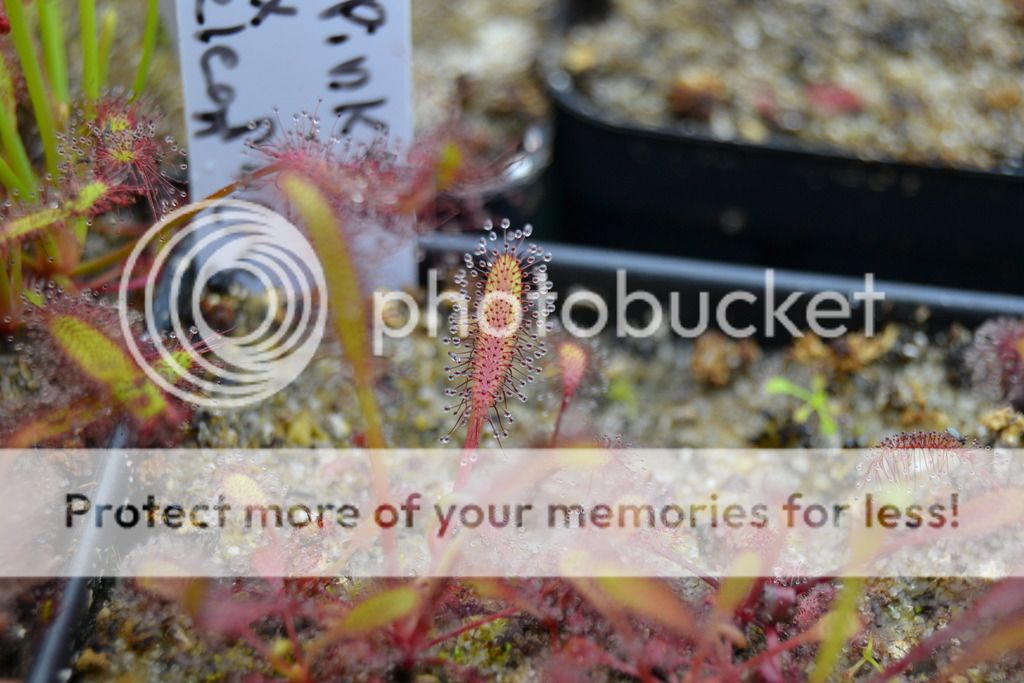
Updated 11/24/18
Last edited by David F on Sun Nov 25, 2018 4:47 am, edited 1 time in total.
Looking for any drosera capensis via seed, pm me!
I'm interested in any sundews.
Growlist/trading profile:
http://www.flytrapcare.com/phpBB3/david-f-s-growlist-t26539.html
I'm interested in any sundews.
Growlist/trading profile:
http://www.flytrapcare.com/phpBB3/david-f-s-growlist-t26539.html
